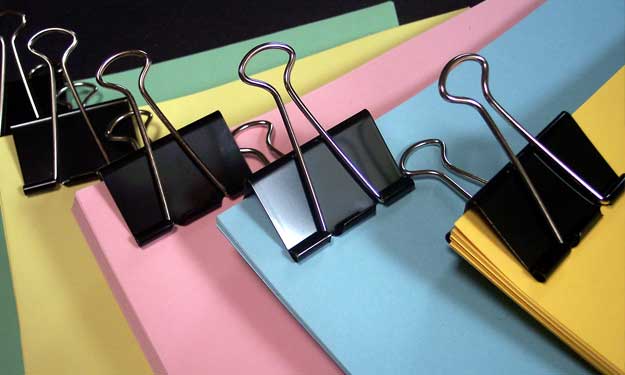Organizing Paper Files

Organizing Your Mail and Paperwork
No matter what system you use, a successful and neat filing system is being able to put your hands on something when you need it.
Letting your paperwork pile up might be the easier way of doing things but in the long run it can only cause you a major headache and stress.
If you take the time to create a system for organizing your papers and sticking to it, the end results will be hassle free!
I work out of my home, I have business papers and personal papers, so I have to make sure my paperwork is in an organized and manageable state. If I don’t stay on top of it, it can completely overtake me in a short amount of time.
How to Organize Paper Files
Taking the time to organize your paper files won’t take long when you have the help to get you started. In the end you’ll have a place for everything and you will be able to locate documents when you need them.
Business Papers
Your business filing system will be broken down into categories that are appropriate for your type of operation and possibly containing sub-categories. Major sections may contain:
- Operational procedures
- Equipment purchases
- Building/office data
- Employee data
- Insurance policies
- Banking information
- Tax returns
- Receipts
Personal Papers
Family and/or personal filing systems may include the following:
- Educational records
- Medical papers (separated by family members)
- Insurance papers
- Banking information
- Deeds
- Wills
- Birth certificates
- Receipts
- Tax returns
Your filing system should also consist of two categories:
- Active
- Historic
Active files are the ones you use daily – correspondence, banking, etc.
Historic files contain tax records, receipts, deeds, wills, etc.
Determine the Supplies You Need
Hanging folders will be needed to store the file folders for your paperwork. Inside these you then put your manila folders with sub-headings.
Depending on the size of your filing cabinet, file folders come legal or letter size and in many colors. They also come pre-cut with either 3 or 5 tabs for easy indexing. Only you can determine how many you need.
Labels are essential for your filing system. They will make it easier to find what you are looking for.
Make a list of the categories you plan to use then purchase your supplies accordingly.
Color coded labels or files are great in making sure similar topics are filed together. File your color coded files in alphabetical order.
In fact, if your medical folder is coded with blue, when information comes across your desk that relates to that topic, put a sticky blue dot on the upper right hand corner. That way, when you run across the sheet with the blue dot, you’ll automatically know it belongs in the medical file folder.
This will also help your “instant recall” when wondering where you put something!
Desktop Organizers
Besides files, folders, stickies or dots – don’t forget a desktop paper organizer. This will help while reviewing and sorting through the mail.
Desktop organizers are used for quickly organizing your papers until you get to them later. No more mess thrown all over your desk.
You should have a minimum of four labeled:
- To Do
- To Pay
- To File
- and To Read
Review, Sort and Dispose
Manage papers on a daily basis by throwing out junk mail and sorting papers into one of the slots of your desktop organizer. If it needs attention, put it in the To Do slot; if it needs to be paid put it in the To Pay slot and so on.
One thing worth mentioning if you don’t have time at the moment, is after paying bills, move the bill to the To File slot for filing at a later time.
Get into the habit of using post it notes with comments if you have questions or colored sticky dots to identify the subject.
Filing Your Papers
Keep most recent documents and data in the front of the files. As the folder fills, at the end of the year, you will have no trouble placing the outdated information into your historical files.
Staggered file tabs are fundamental to good filing organization. You can either file alphabetically or by category then alphabetically within the category. Just be sure when making a new file the tab is visible from the one that immediately preceded it.
Filing Historical Papers
There are heavy-duty corrugated paper boxes you can get from the office supply store that are great for long-term storage of important documents. Be sure to label them correctly when storing.
Annual Maintenance of the System
Annual maintenance of your filing system consists of going through the active files, and determining what can be removed and stored. Business and professional records must be stored for a certain number of years.
Don’t destroy any of these valuable records unless you are completely sure they are outdated and you will not be required by IRS or a government agency to produce these records.






